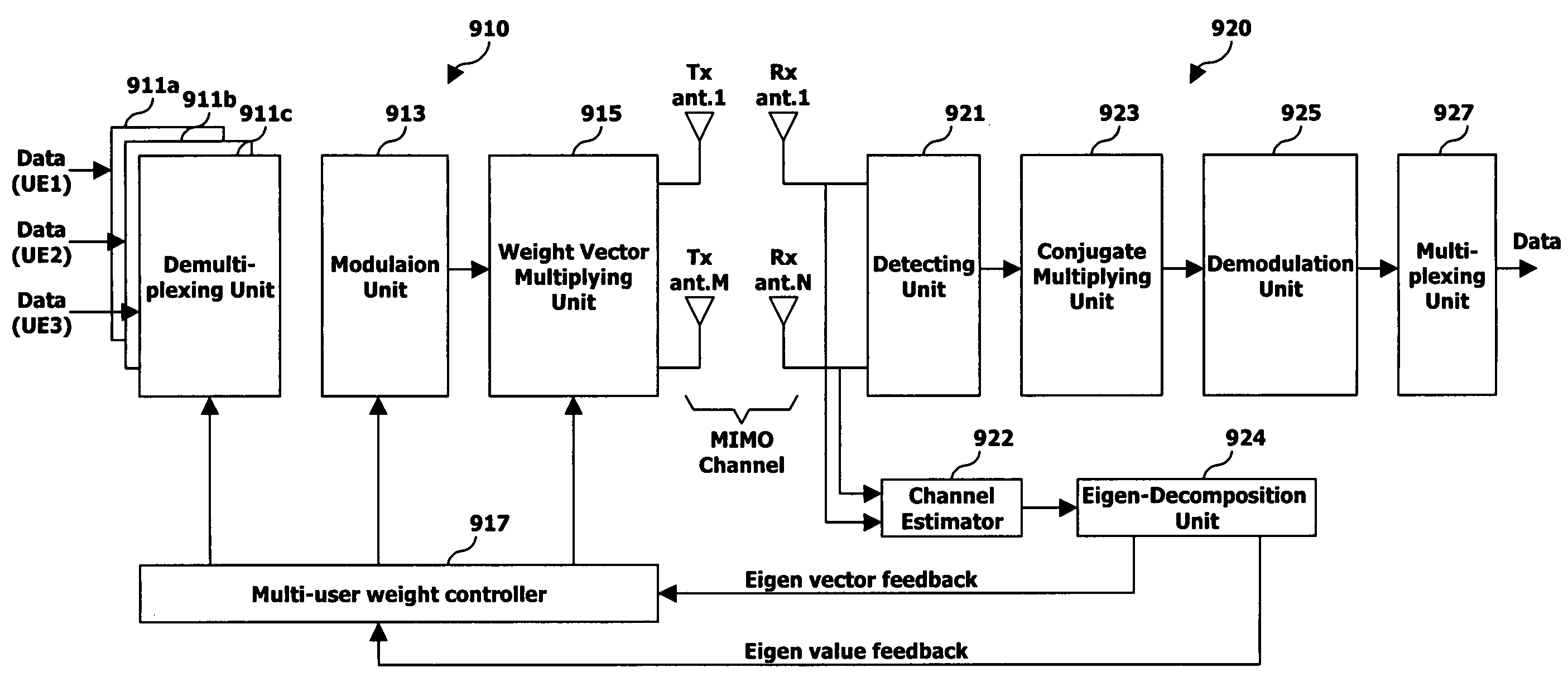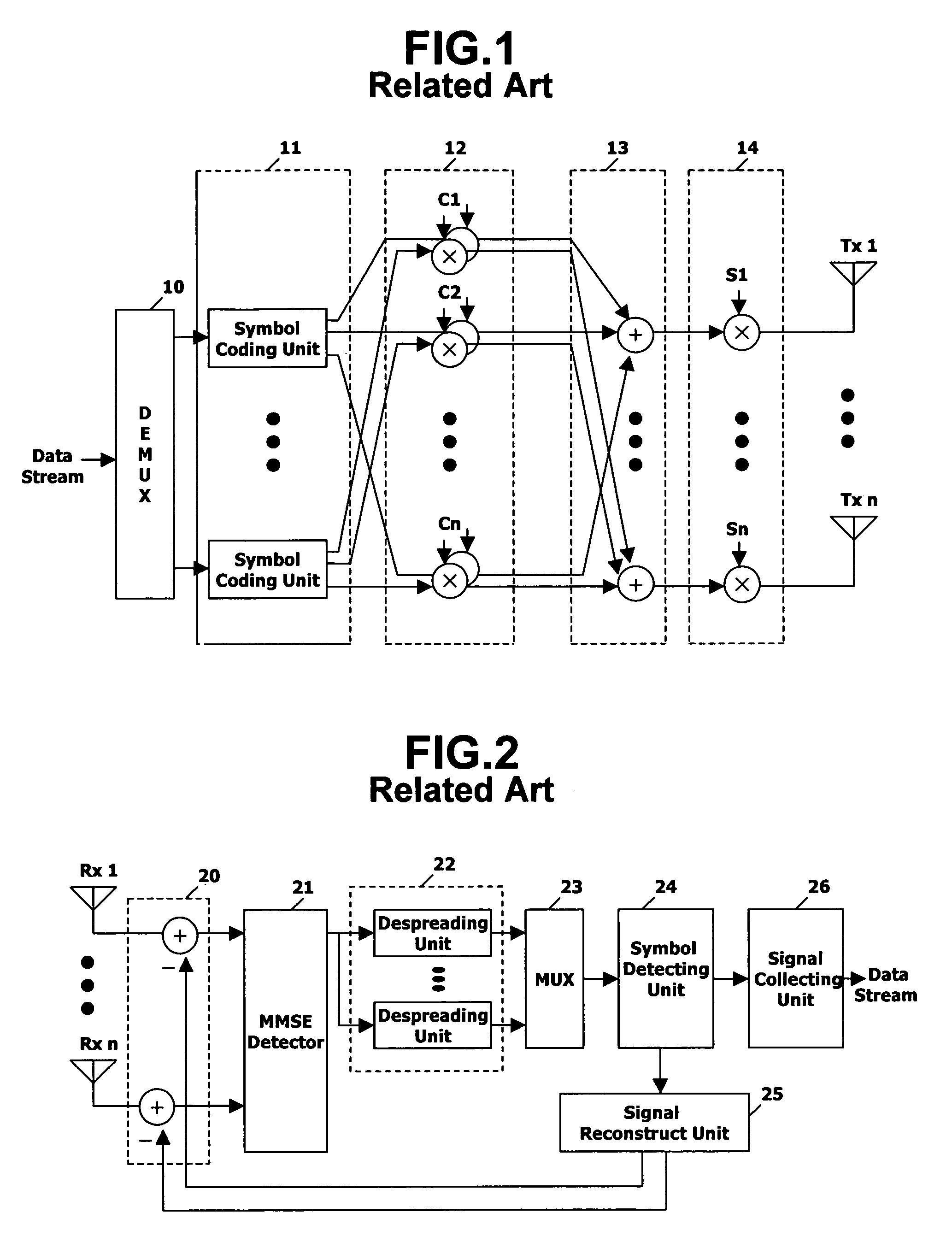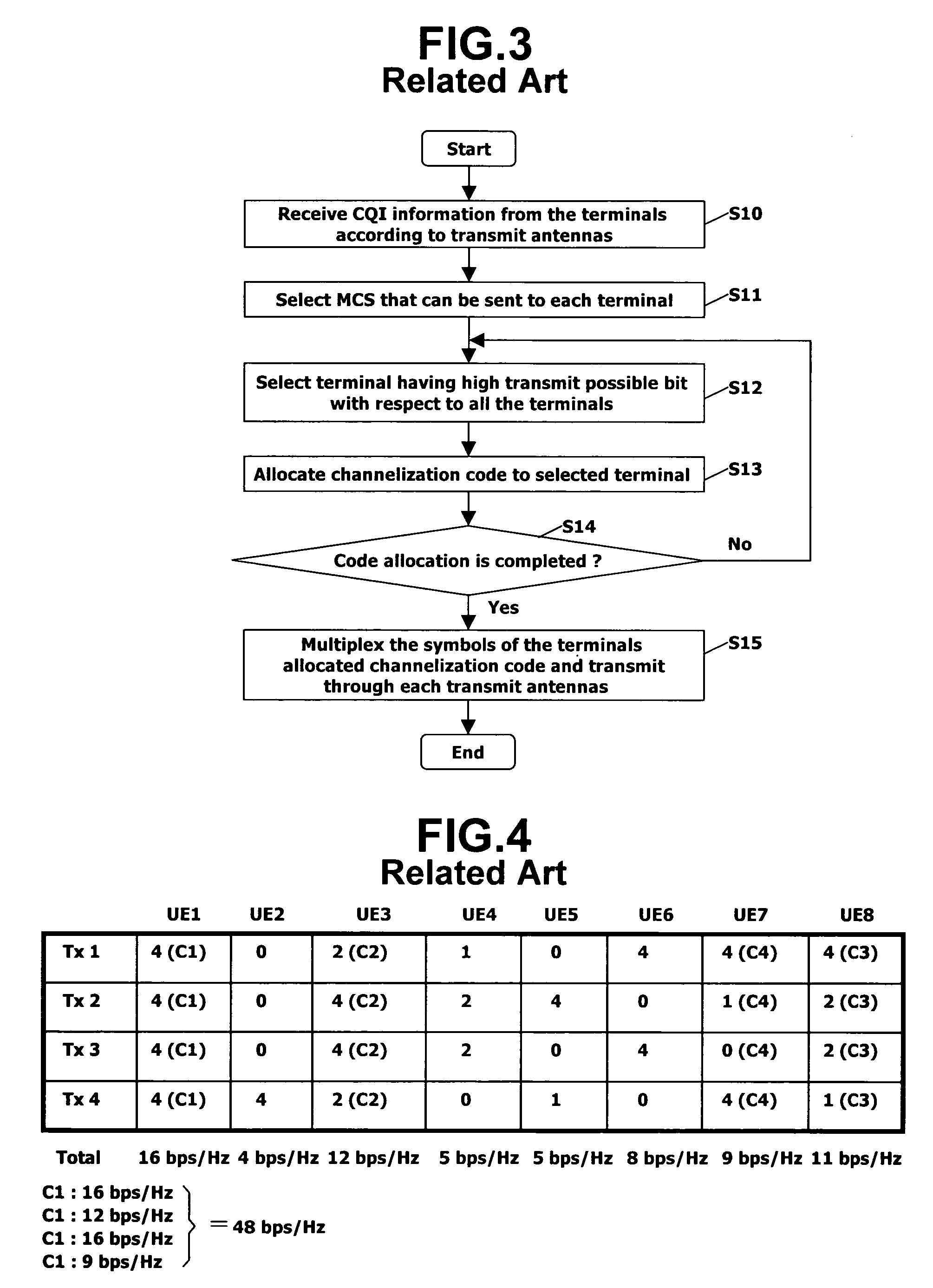Method and apparatus for allocating channelization codes for wireless communications
a wireless communication and channelization code technology, applied in the field of communication systems, can solve the problems of inefficient use of limited channel resources, reduced efficiency of channel resources, and other links being considered extremely bad, and achieve the effect of enhancing the capability of symbol detection of the receiving end
- Summary
- Abstract
- Description
- Claims
- Application Information
AI Technical Summary
Benefits of technology
Problems solved by technology
Method used
Image
Examples
Embodiment Construction
[0086]In general, the channel quality of each transmit antenna in a MIMO system employing multiple antennas at the transmit and receive ends. Namely, even if the overall channel quality of the transmit antennas with respect to a particular terminal (user) is satisfactory, the channel quality between each antenna and various terminals may not be satisfactory. Thus, even if the link quality between the base station and the terminal is considered to be good, in actuality, there may be some links that are considered very good, while other links that are considered not good.
[0087]Accordingly, unlike the related art that considers the maximum ‘transmit possible bit number’ with respect to all antennas when allocating channelization codes, the invention provides a scheme that determines the maximum ‘transmit possible bit number’ (i.e., the channel state or condition) for each antenna when allocating channelization codes.
[0088]Also, when multiple users simultaneously receive a service in a ...
PUM
 Login to View More
Login to View More Abstract
Description
Claims
Application Information
 Login to View More
Login to View More - R&D
- Intellectual Property
- Life Sciences
- Materials
- Tech Scout
- Unparalleled Data Quality
- Higher Quality Content
- 60% Fewer Hallucinations
Browse by: Latest US Patents, China's latest patents, Technical Efficacy Thesaurus, Application Domain, Technology Topic, Popular Technical Reports.
© 2025 PatSnap. All rights reserved.Legal|Privacy policy|Modern Slavery Act Transparency Statement|Sitemap|About US| Contact US: help@patsnap.com



